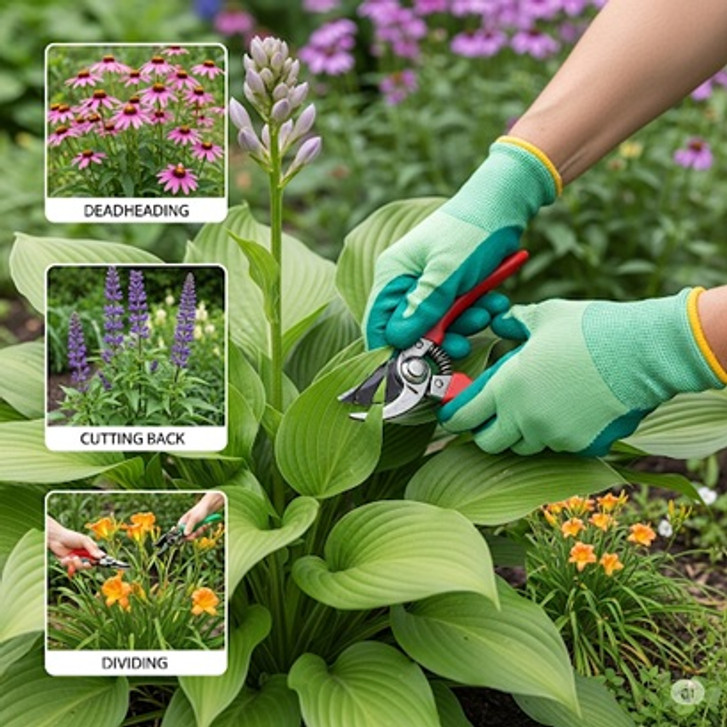Pruning Perennials: When and What to Cut Back
Pruning perennials is an essential task for any gardener. It helps maintain plant health, encourage new growth, and prepare your garden for the seasons ahead. But with so many different plants, knowing when and what to cut back can be tricky. Should you prune in the fall or wait until spring? And which plants benefit from which approach?
Generally, the best time to prune perennials depends on the plant itself and its overall health. While many plants can be left alone until spring, some benefit from a fall trim.
Fall Pruning: Which Perennials to Cut Back
Fall is the ideal time to prune perennials that are susceptible to disease or are prone to collapsing after frost. Removing old, infected foliage prevents problems from carrying over to the next growing season. Here are some common perennials to consider cutting back in the fall:
- Peonies & Bee Balm: These plants are highly susceptible to powdery mildew. Pruning them after the first frost helps prevent fungal spores from overwintering and spreading. Be sure to dispose of the diseased foliage and not compost it.
- Hostas: After a hard frost, hosta leaves turn to mush and can harbor slug eggs. Cutting them back helps keep your garden slug-free in the spring.
- Bearded Iris: Iris borers lay their eggs on the leaves and stems. Trimming the foliage back and removing it from the garden can significantly reduce or eliminate these pests.
- Daylilies & Catmint: While they can be left until spring, trimming these in the fall can make your garden tidier and save you a messy cleanup later.
- Yarrow: The foliage of yarrow can become diseased and floppy by fall. Cutting it back encourages new, healthy basal growth to protect the plant through winter.
Spring Pruning: Which Perennials to Leave Alone
Leaving certain perennials standing through the winter offers several benefits. The dried stems and seed heads provide food for birds, shelter for beneficial insects, and add visual interest to an otherwise dormant landscape. These plants are often better off being pruned in the spring, just before new growth appears.
- Coneflowers & Black-Eyed Susans: The seed heads of these plants are a favorite food source for birds, especially goldfinches. Leaving them standing provides a crucial food source during the cold months.
- Ornamental Grasses: These grasses add beautiful texture and movement to a winter garden. They also offer shelter for wildlife. Trim them back in late winter or early spring before new shoots emerge.
- Russian Sage, Asters & Sedum: The sturdy stems and interesting forms of these plants provide excellent winter interest.
- Evergreen or Semi-Evergreen Perennials: Plants like hellebores, heucheras, hardy geraniums, and dianthus should not be cut back in the fall. Their foliage provides insulation and protection for the root crown. You can simply tidy them up in the spring.
Important Pruning Tips
- Wait until after a hard frost: Unless a plant is diseased, hold off on pruning until after a few hard frosts. This gives the plant’s roots time to reclaim energy from the dying foliage, which helps it grow stronger in the spring.
- Use the right tools: Use sharp bypass pruners to make clean cuts. Bypass pruners cut like scissors, while anvil pruners can crush the stem, causing unnecessary damage.
- Clean your tools: To prevent the spread of disease, clean your pruners with a solution of rubbing alcohol or a household disinfectant between plants, especially if you are dealing with infected foliage.
- Leave a stub: When cutting back a perennial, leave a 2- to 6-inch stub above the ground. This helps you locate the plant in the spring and protects the plant's crown from damage.
- Remove diseased material: Always remove and discard diseased or pest-infested foliage and stems. Never put this material in your compost pile, as it can harbor pathogens and infest your garden again next year.
By following these simple guidelines, you can ensure your perennials stay healthy and vibrant, providing beauty in your garden for years to come. Do you have any other questions about preparing your garden for winter?

